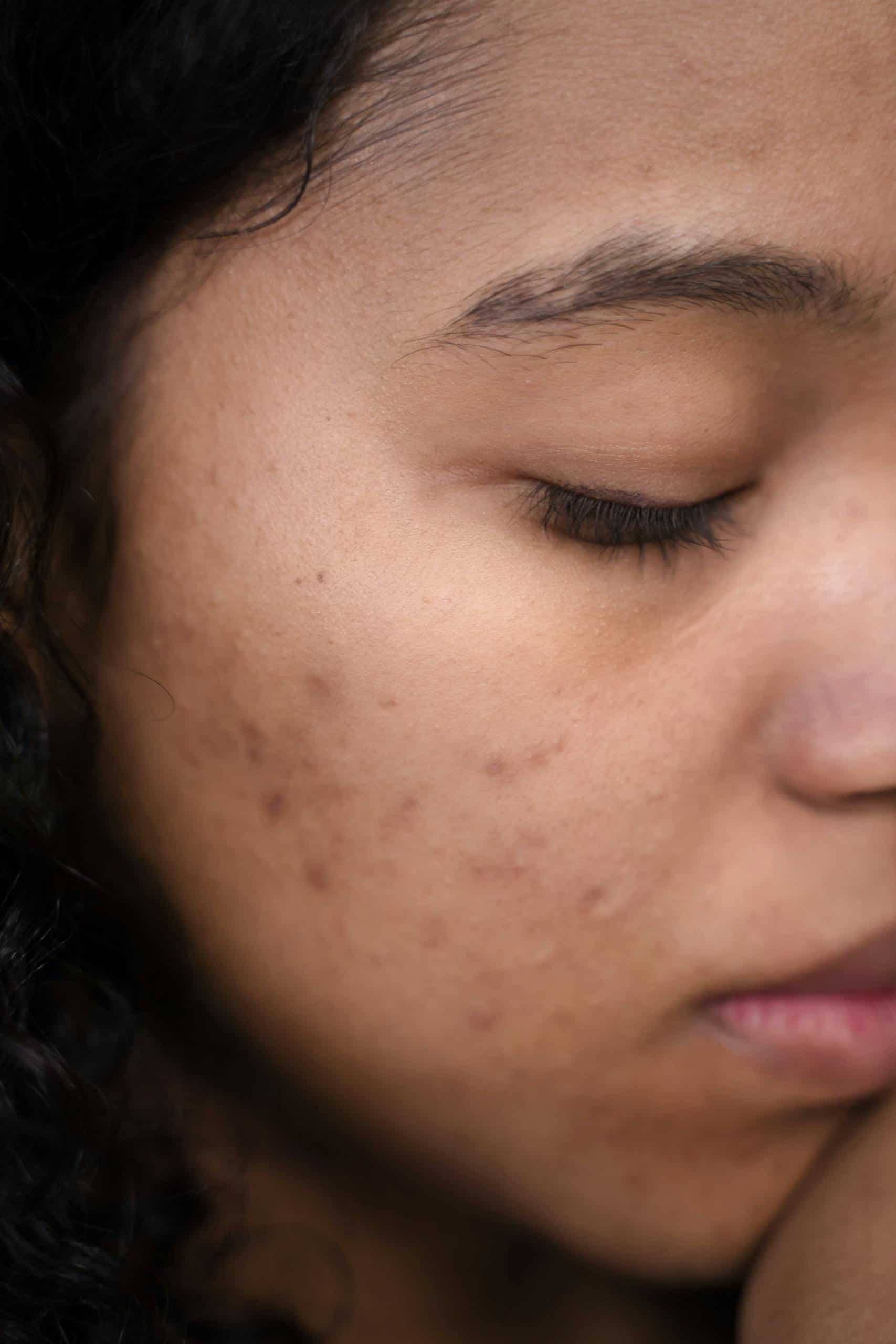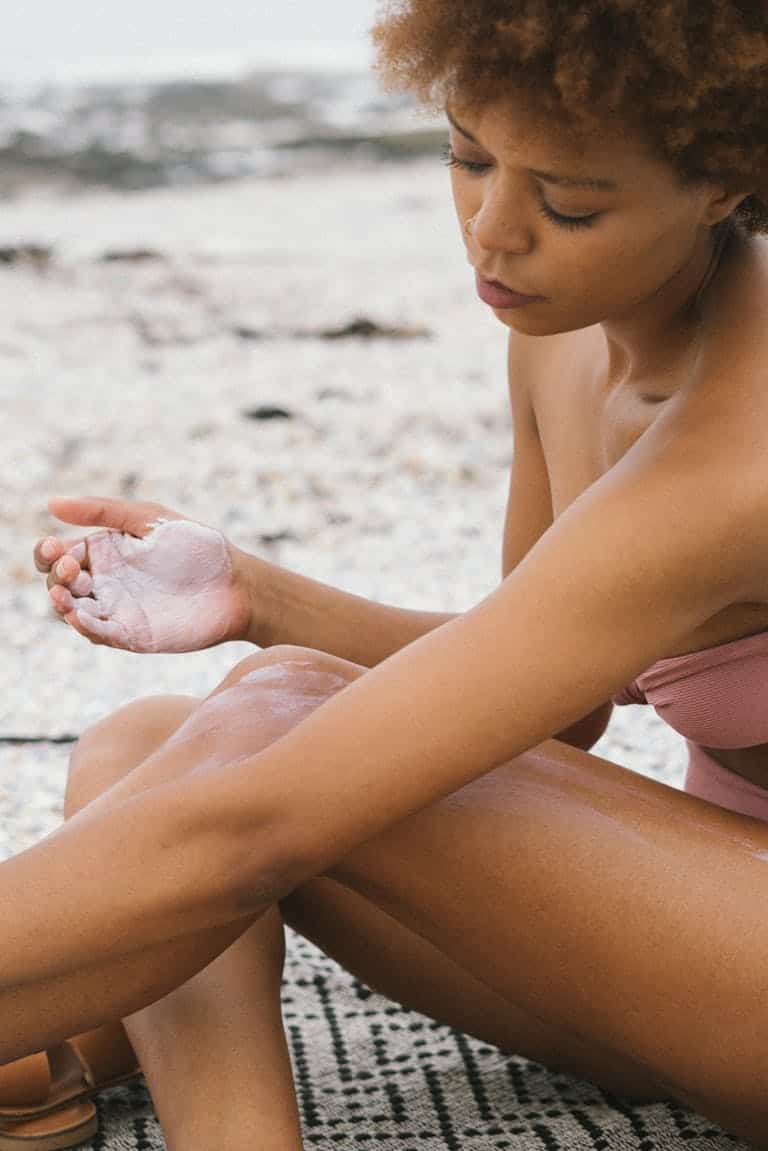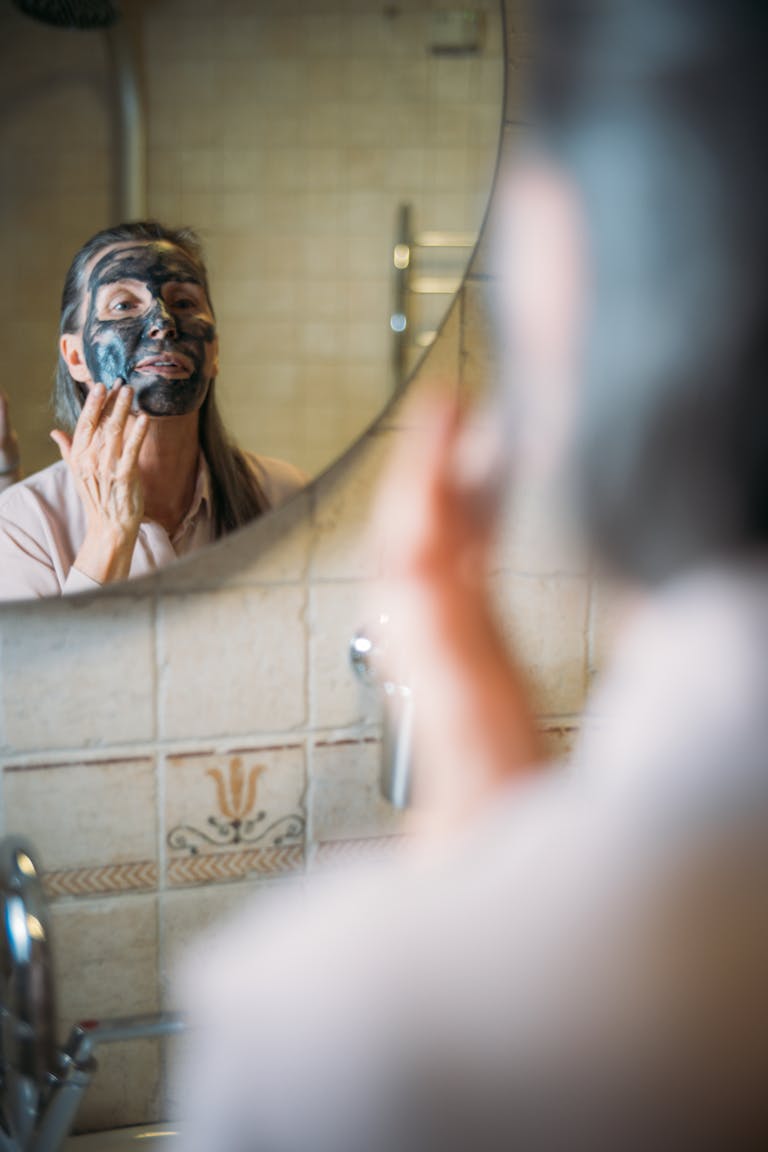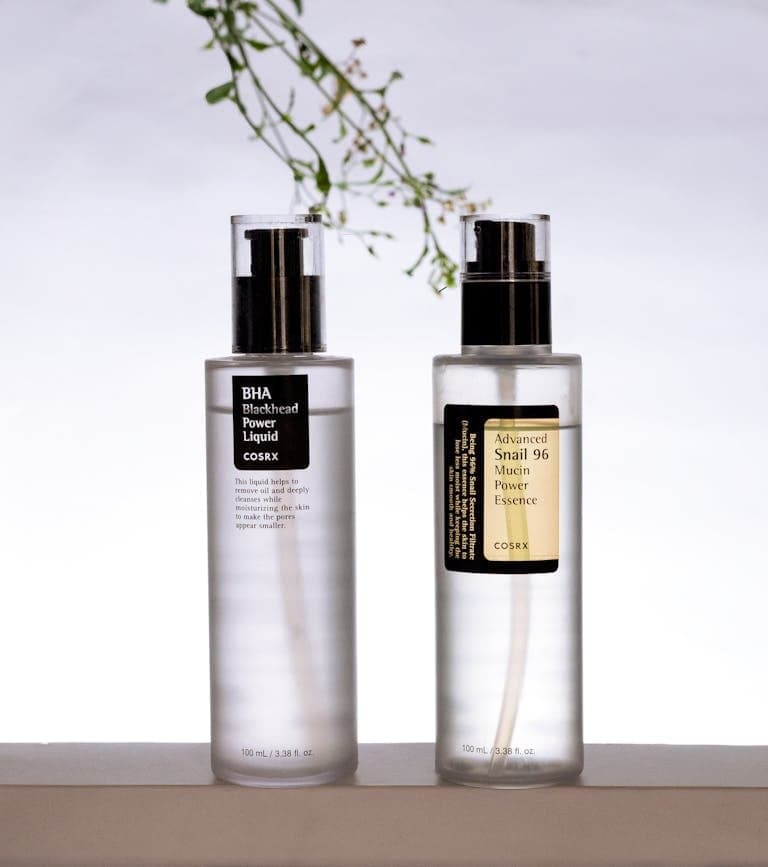Acne in Perimenopause: What Triggers It and How to Treat It Gently
Perimenopause acne treatment requires a different approach than teen breakouts—especially when your skin is also becoming drier, more sensitive, and less predictable.
Acne in Perimenopause Is More Common Than You Think
Perimenopause is a hormonal transition that can last several years before menopause. During this time, levels of estrogen and progesterone fluctuate, often leading to a relative increase in androgens. This hormonal imbalance may trigger an uptick in sebum production, particularly around the jawline, chin, and neck—areas especially prone to perimenopausal acne.
Unlike the acne many experience in adolescence, these breakouts are often deeper, more inflamed, and longer-lasting. They can coexist with drier or more sensitive skin, making treatment more challenging. What works for teenage breakouts often causes irritation or damage to mature skin, leaving many women unsure how to proceed.

Why Typical Acne Treatments May Irritate Mature Skin
Most acne products are designed for oily, resilient skin. Strong cleansers, alcohol-based toners, and high-strength acids may initially dry out a blemish, but over time they often strip the skin barrier, increasing sensitivity and leading to even more breakouts.
Mature skin also has a slower rate of cell turnover and reduced moisture retention. When the skin is over-exfoliated or dehydrated, the barrier weakens, inflammation increases, and the risk of pigmentation and texture changes rises.
What Actually Helps: A Measured, Hydrating Approach
The key to treating hormonal acne in perimenopause is balancing oil control with barrier support. Skin needs active ingredients, but in lower concentrations and within hydrating formulas.
Start with a mild, non-stripping cleanser that removes buildup without over-drying. Use a low-strength chemical exfoliant like lactic or mandelic acid just once or twice a week to encourage cell turnover without causing inflammation. In many Korean skincare approaches for perimenopausal skin, double cleansing is emphasized.
Niacinamide is an excellent choice for daily use. It helps regulate oil production, reduce redness, and support the skin’s protective barrier. Another standout ingredient is azelaic acid, which treats both acne and pigmentation while being well-tolerated by sensitive skin.
Retinoids can be helpful too, but they should be introduced cautiously. A time-released or encapsulated formula used every third night, buffered with moisturizer, is usually well-tolerated.
Hydration is essential. Even acne-prone skin needs a moisturizer, especially one that contains ceramides, squalane, or hyaluronic acid. These ingredients replenish moisture and protect the skin from further irritation. Balancing hydration with a clean serum can help calm acne-prone skin.
Sun protection is critical. Daily use of a mineral sunscreen helps prevent post-acne pigmentation and shields the skin from UV-induced inflammation, which can worsen breakouts.
Lifestyle Support for Clearer Skin
Perimenopausal acne isn’t just a surface issue—it often reflects deeper imbalances. Stress, poor sleep, blood sugar instability, and inflammation can all contribute to flare-ups. Supporting your body internally makes a difference.
A diet rich in vegetables, healthy fats, and fiber supports skin health. Reducing refined sugar, dairy, and ultra-processed foods may help regulate hormones and decrease inflammation. Staying hydrated and managing stress with practices like walking, breathwork, or acupuncture can also support more stable skin.
Recommended Skincare for Acne-Prone Perimenopausal Skin
La Roche‑Posay Toleriane Hydrating Gentle Cleanser
A cream-based, fragrance‑free cleanser that removes impurities without stripping moisture—ideal for acne-prone, sensitive or mature skin.
The Ordinary Lactic Acid 5% + HA
Lactic acid is a gentler alpha hydroxy acid (AHA) that exfoliates the skin while improving hydration. This 5% concentration is mild and suitable for sensitive or mature skin. Includes hyaluronic acid for added moisture support.
Good Molecules Niacinamide Serum
A 10% niacinamide formula that balances oil, calms redness, and supports texture—gentle enough for twice-daily use.
Kiehl’s Ultra Facial Oil‑Free Gel Cream
A lightweight, oil-free gel moisturizer containing ceramides, niacinamide, and hyaluronic acid—hydrating without clogging pores.
CeraVe Resurfacing Retinol Serum
A lightweight, oil‑free serum formulated with encapsulated retinol that gradually resurfaces the skin, alongside ceramides, niacinamide, and hyaluronic acid to support hydration and barrier repair. Especially effective for smoothing texture, reducing post‑acne marks, and balancing oil—without overstressing mature or sensitive skin.
EltaMD UV Clear Broad-Spectrum SPF 46
Formulated specifically for acne-prone and sensitive skin, this mineral-based sunscreen contains niacinamide (soothing + barrier-repair), zinc oxide, and is oil-free and non-comedogenic.
Hero Mighty Patch Original
This award-winning hydrocolloid patch visibly flattens pimples overnight by drawing out pus and fluid without drying or irritating the skin. It’s made from medical-grade, drug-free hydrocolloid with no fragrance, dyes, or harsh ingredients—making it ideal for sensitive or acne-prone perimenopausal skin. The patch adheres well, stays in place while you sleep, and peels off cleanly in the morning, revealing calmer, less inflamed skin.
A Sample Weekly Routine
Cleanse morning and evening. Exfoliate one to two times weekly with a lactic or mandelic acid treatment. Apply niacinamide serum daily. Follow with a barrier supporting moisturizer. Introduce a gentle retinoid at night once or twice a week, gradually increasing as tolerated. For active pimples, try a hydrocolloid patch overnight. Apply a mineral-based sunscreen every morning.
When to Consult a Professional
If acne is cystic, painful, or causing scarring or pigmentation that doesn’t improve with topical care, it’s worth consulting a dermatologist. Medications like spironolactone can help reduce sebum production, while prescription retinoids may be appropriate in some cases. Hormone replacement therapy may also affect acne, depending on the type and delivery method, so discuss all options with your provider.
Conclusion
Perimenopausal acne is a common but frustrating challenge. The right combination of gentle, effective products, lifestyle support, and patience can help you reduce breakouts while protecting your skin’s integrity. With a calm, consistent approach, you can navigate these changes with more comfort and confidence.





